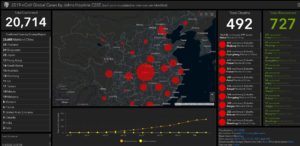fjdimora@gmail.com
Download The Last Chronicles of Planet Earth February 2 2020 edition written by Frank DiMora
How to Add the Last Chronicles to your Electronic Device
 In my April 5, 2012 post I stated the following. “Prophecy Sign: Revelation 6:6 “And I heard a voice in the midst of the four living creatures say, A measure of wheat for a penny, and three measures of barley for a penny; and see you hurt not the oil and the wine.” From my Oct. 19, 2011 post: Rev. 6:6 is where Jesus shows us that people will have to work all day for one small meal. I told you to watch for more news showing us the food prices are climbing.” This only one of my many warnings over the years about the food prices will rise.
In my April 5, 2012 post I stated the following. “Prophecy Sign: Revelation 6:6 “And I heard a voice in the midst of the four living creatures say, A measure of wheat for a penny, and three measures of barley for a penny; and see you hurt not the oil and the wine.” From my Oct. 19, 2011 post: Rev. 6:6 is where Jesus shows us that people will have to work all day for one small meal. I told you to watch for more news showing us the food prices are climbing.” This only one of my many warnings over the years about the food prices will rise.
If you are the one who has been buying the food for your family over these past years I don’t have to show you the food prices have indeed keep going up. If you take the time to read the reports at this site concerning the rising food prices you will see my warnings have come to pass however, its not over yet! As you begin reading the report you will notice I start off with the news from 2019 and move to the current news in 2020. Then just before ending my post I show you a report showing you some of the reasons since 2008, that has caused the rise in food prices. The closer our generation gets to the Lord’s second coming the worse you will see what your food costs. Don’t expect to see a downward trend that would last. I say that because what Jesus has revealed to us in that Revelation 6:6 scripture. Already in 2020, the new coronavirus has has taken it toll as it has pulled many people away from their normal jobs such as farming in China. FEBRUARY 3, 2020 the Atlantic report ran this headline: The New Coronavirus Is a Truly Modern Epidemic.
https://www.theatlantic.com/science/archive/2020/02/coronavirus-very-2020-epidemic/605941/
Ask farm owner in China how diseases impact food price. Headline: “How China’s Food Industry Impacts Pandemics” https://www.supplychainbrain.com/articles/30756-coronavirus-how-chinas-food-industry-impacts-pandemics
My point is there are many reasons why the food prices keep going up. If you read the Bible and the Lord’s warnings you would understand some of the reasons such as massive flooding from those storms Jesus warned us about as in Luke 21:11. We know that disease, drought, plagues such as those billions of locusts swarm over East Africa right now, the scorching of the land via the Sun will also take out much of the crops just prior to Christ’s return. Of course there is always the on going wars that pull people away from farming such as seen in the 7 year civil war going on in Syria. Before you get into the reports below let me say the following, I this post I am only giving you one of the many last day signs Jesus told us to look for when we saw the rebirth of the nation of Israel. Rising food prices wouldn’t cause one to be alarmed that Jesus is on the way however, our generation is witnessing all the last day birth pains Jesus gave us all together which tells us now is the time to get right with the Messiah of the world! that Messiah’s name is JESUS CHRIST. He is waiting for you to receive Him as your Lord. I pray this post helps you make your decision to take Him as your Lord and Savior today. Now it’s time to read the proof!
 A spike in food prices may not cause a recession, but it could spark a humanitarian crisis: Nomura
A spike in food prices may not cause a recession, but it could spark a humanitarian crisis: Nomura
PUBLISHED MON, DEC 2 2019
“A surge in food prices could cause a massive humanitarian crisis as more than half the world’s population is vulnerable to such a risk, Nomura wrote in a recent note. “The countries most vulnerable to a surge in food prices account for a small portion of the world economy, but make up a much larger share of the world population,” Nomura’s analysts wrote. “A sustained surge in food prices is unlikely to cause a global economic recession, but it could cause a humanitarian crisis on a global scale.” By its count, the bank said the 50 most vulnerable countries in its index make up just 26.1% of global GDP, but 59.1% of the world. Of those countries, all but four are developing economies, Nomura noted in a recent report. “The vulnerability to a food price surge is very much an EM phenomenon,” Nomura noted.” https://www.cnbc.com/2019/12/02/food-price-surge-could-spark-a-global-humanitarian-crisis-nomura.html
Food prices to rise by up to 4% in 2020, report finds
December 4, 2019

“Expect to pay more for your meals next year.
The average Canadian household will pay $12,667 for its groceries in 2020 — a jump of $487, according to Canada’s Food Price Report released Wednesday.
A joint effort of the University of Guelph’s Arrell Food Institute and Dalhousie University’s Agri-Food Analytics Lab, the 10th annual report indicated that overall food prices are expected to jump to between 2-4%, which is a bit higher than last year’s forecast of 1.5-3.5%.
Meat prices are expected to see the biggest jump, between 4% and 6%, but vegetables and seafood are also supposed to increase 2-4%. Fruits are expected to rise between 1.5% and 3.5%. And the increase on produce is in addition to the 12% price hike over this past year.”
https://canoe.com/life/food/food-prices-to-rise-by-up-to-4-in-2020-report-finds
 World food prices continue rising in December
World food prices continue rising in December
Published 09 Jan 2020
9 January 2020, Rome – World food prices rose for the third consecutive month in December, as a strong rally in vegetable oil prices drove the FAO Food Price Index to its highest level in five years. The FAO Food Price Index averaged 181.7 points during the month, a 2.5 percent increase from November and the highest level since December 2014. For 2019 as a whole, the index – which tracks monthly changes in the international prices of commonly-traded food commodities – averaged 171.5 points, some 1.8 percent higher than in 2018 but still 25 percent below its peak in 2011.
https://reliefweb.int/report/world/world-food-prices-continue-rising-december
 African swine fever to hit Chinese pork supply
African swine fever to hit Chinese pork supply
Published: January 30, 2020
BANFF, Alta. — Video of people fighting over pork at Chinese meat counters will likely become more common as the fallout from the African swine fever outbreak in China progresses. Brett Stuart, president of the market research and analysis firm Global AgriTrends, estimates that about two-thirds of China’s swine herd has been lost to the disease and contrary to official government reports of recovery, more pigs are dying every day as ASF continues to spread. https://www.producer.com/2020/01/african-swine-fever-to-hit-chinese-pork-supply/
 Why Food Prices Are Rising, Recent Trends, and 2019 Forecast
Why Food Prices Are Rising, Recent Trends, and 2019 Forecast
Updated December 13, 2019
Most years see major events that impact food prices. Some recent years that saw such impact include:
-
- 2008: Food prices rose 6.4% according to the Consumer Price Index for food. It was the largest single-year increase since 1984. Commodity speculators caused higher food prices in 2008 and 2009. As the global financial crisis pummeled stock market prices, investors fled to the commodities markets. As a result, oil prices rose to a record of $145 a barrel in July, driving gas prices to $4 a gallon. Part of this was caused by surging demand from China and India, which escaped the brunt of the subprime mortgage crisis. This asset bubble spread to wheat, gold, and other related futures markets. Food prices skyrocketed worldwide. As a result, food riots by people facing starvation erupted in less-developed countries.
-
- 2011: Prices rose by 4.8%. Some experts said this contributed to the Arab Spring uprising. According to the World Bank, wheat prices more than doubled this year. Massive wildfires in Russia devastated crops in 2010. In response, commodity speculators drove prices even higher to take advantage of this trend. They drove corn, sugar, and cooking oil prices higher. Droughts in the southern United States reduced hen output, raising egg prices. Japan’s earthquake reduced fishing capability, lowering seafood prices.
- 2012: The drought affected overall food prices, which increased by about 2.5%, according to the U.S. Department of Agriculture. Exceptions included beef, veal, poultry, and fruit, but prices fell for pork, eggs, and vegetables. The USDA based this on $100/barrel oil prices caused by threats of military action against Iran and high demand caused by summer vacation driving. The USDA also was concerned about reduced soybean production in South America.
- 2013: Food prices rose only 0.9% this year. Beef and veal prices rose 2%, according to the USDA’s “Annual Percent Change in Food Prices by Category.” The 2012 drought forced farmers to slaughter cattle that had become too expensive to feed. The drought also withered crops in the field. As a result, prices for corn, soybeans, and other grains rose. It takes several months for commodities prices to reach the grocery store. As a result, most of the drought’s effects occurred in 2013. Hardest hit were fresh vegetables, which rose 4.7%.
- 2014: Food prices rose 2.4%. Prices of specific types of food rose thanks to weather conditions. For example, drought in the Midwest drove up beef prices 12%. The beef industry had been suffering from drought since 2012. Rising beef prices affected the demand schedule. The California drought, one of the worst on record, resulted in higher prices for fresh fruits, vegetables, and nuts. Fruit prices rose by 4.8%.
- 2015: Prices increased by 1.9% on average. Beef and veal prices rose 7.2% due to a drought in Texas and Oklahoma. Egg prices skyrocketed 17.8% thanks to the Highly Pathogenic Avian Influenza. Fish and seafood cost 0.9% less.
- 2016: Food prices were expected to rise by 1% to 2%. Instead, they fell by 1.3%. The dollar strengthened 25%, lowering food import costs. Egg prices fell 21.1% from their excessive 2015 level.
- 2017: Food prices rose 8.2%, the highest annual average since 2014. The USDA expected prices to rise by 1%. It thought the strong dollar would continue depressing food import prices. Instead, the dollar weakened, having the opposite effect. Producers were able to export more food, limiting supply and raising domestic prices. Oil prices also were expected to remain moderate. They rose instead, increasing trucking costs.
- 2018: Food prices rose 1.6%. Hurricanes caused temporary price spikes as the production of pecans, chickens, and hogs was impacted. Long-term demand for meat and dairy products has declined due to shifting consumer tastes.
- https://www.thebalance.com/why-are-food-prices-rising-causes-of-food-price-inflation-3306099
In the video below you will hear from someone who has been hit with these high food prices. He will also points to reasons why the prices are going up.
“And there will be great earthquakes in various places, and famines and pestilences; and there will be fearful sights and great signs from heaven.” (Luke) “So I looked, and behold, a pale horse. And the name of him who sat on it was Death, and Hades followed with him. And power was given to them over a fourth of the earth, to kill with sword, with hunger, with death (Thanatos in Greek meaning the death of the body whether natural or violent), and by the beasts of the earth” (Revelation)
 4 Plagues Are Marching Across Asia Simultaneously: Coronavirus, African Swine Fever, H5N1 Bird Flu, & H1N1 Swine Flu
4 Plagues Are Marching Across Asia Simultaneously: Coronavirus, African Swine Fever, H5N1 Bird Flu, & H1N1 Swine Flu
 China Confirms 2,350 New Coronavirus Cases; Death Toll Climbs To 425
China Confirms 2,350 New Coronavirus Cases; Death Toll Climbs To 425
According to Chinese health authorities, 2,345 were confirmed on Monday, while another 64 died (including 48 in Wuhan alone). Hubei Province is now reporting 13,522 cases of coronavirus infection (including 6384 in Wuhan), while 58,544 are under observation across China. 46 new deaths were reported overnight, bringing the death toll in China to at least 425.
Take a look at the number of people who have contacted the Coronavirus as of yesterday.
 Now look below and see how many got the virus in one day!
Now look below and see how many got the virus in one day!
https://gisanddata.maps.arcgis.com/apps/opsdashboard/index.html#/bda7594740fd40299423467b48e9ecf6
Below is a prime example of what I stated that shows why flooding and war play a roll in the last day events.
 South Sudan flooding worsens humanitarian crisis
South Sudan flooding worsens humanitarian crisis
The World Food Programme is warning that the number of people in need of aid in South Sudan will increase this year. Years of conflict have left nearly half of the population relying on food assistance. And, as Al Jaazeera’s Hiba Morgan reports, recent flooding has made the situation worse for thousands more.


